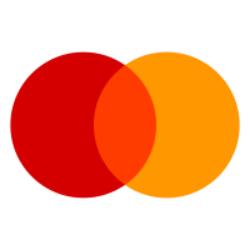MasterCard demonstrates a strong business model with significant growth prospects and innovation potential. While facing currency volatility, the company's diverse partnerships, strong revenue growth, and strategic investments in security position it favorably for the future.
Analysis Date: January 30, 2025
Last Updated: March 12, 2025
Trailing Twelve Months (TTM) values provide a view of the company's performance over the last year.
Graham Value Metrics
Benjamin Graham's value investing approach focuses on finding stocks with a significant margin of safety between their intrinsic value and market price.
Intrinsic Value
Estimated fair value based on Graham's formula
$469.35
Current Market Price: $483.30
IV/P Ratio: 0.97x (>1.0 indicates undervalued)
Margin of Safety
Gap between intrinsic value and market price
-3.0%
Graham recommended a minimum of 20-30% margin of safety
Higher values indicate a greater potential discount to fair value
ROE: 180.12522298786246
ROA: 6.9507705746552695
Gross Profit Margin: 76.30915610466148
Net Profit Margin: 45.70596797671033
Trailing Twelve Months (TTM) values provide a view of the company's performance over the last year.
Strong Net Profit Margin
The company has a net profit margin of 45.71%, reflecting strong profitability after all expenses are accounted for.
High Return on Equity
The return on equity (ROE) is approximately 1.80, indicating that the company is generating a solid return on shareholders' investments.
High Operating Costs
55.32%
Operating Profit Margin
Although the operating profit margin is strong at 55.32%, the overall high valuation ratios might indicate that this profitability is already priced into the stock.
About Profitability Metrics
Profitability metrics measure a company's ability to generate earnings relative to its revenue, operating costs, and other relevant metrics. Higher values generally indicate better performance.
Return on Equity (ROE)
Measures how efficiently a company uses its equity to generate profits
180.13%
10%
15%
Higher values indicate better returns for shareholders
TTM (as of 2025-04-16)
Return on Assets (ROA)
Measures how efficiently a company uses its assets to generate profits
6.95%
3%
7%
Higher values indicate better asset utilization
TTM (as of 2025-04-16)
Gross Profit Margin
Percentage of revenue retained after accounting for cost of goods sold
76.31%
20%
40%
Higher values indicate better efficiency in production
TTM (as of 2025-04-16)
Net Profit Margin
Percentage of revenue retained after accounting for all expenses
45.71%
8%
15%
Higher values indicate better overall profitability
TTM (as of 2025-04-16)
Strong Interest Coverage
24.12
Interest Coverage Ratio
With an interest coverage ratio of 24.12, the company can comfortably meet its interest obligations, indicating strong financial stability.
High Debt Levels
2.81
Debt-to-Equity Ratio
The debt-to-equity ratio of 2.81 suggests a high level of debt relative to equity, which could pose risks if the company's earnings fluctuate.
Liquidity Concerns
With a current ratio of 1.03 and a cash ratio of 0.44, the company may have limited liquidity to cover short-term liabilities.
About Financial Health Metrics
Financial health metrics assess a company's ability to meet its financial obligations and its overall financial stability.
Debt to Equity Ratio
Total debt divided by total equity
2.78x
1.0x
2.0x
Lower values indicate less financial leverage and risk
Less than 1.0 is conservative, 1.0-2.0 is moderate, >2.0 indicates high risk
Q4 2024
Current Ratio
Current assets divided by current liabilities
1.03x
1.0x
2.0x
Higher values indicate better short-term liquidity
Less than 1.0 is concerning, 1.0-2.0 is adequate, greater than 2.0 is good
Q4 2024


